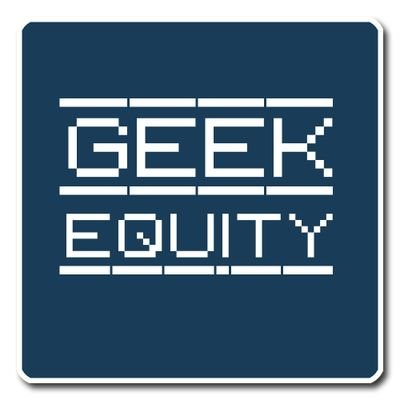As this project is approaching its end, we organised an end-of-project event on Zoom on 8th December. In his last blog post, Andreas Ottemo reflects on some of the questions that came up at this event, and what we have learnt from the project looking back.
My first two posts on this blog had the titles: “The Elusive Geek” and “Is there a core to geek identity?”. From a few different angles, they both explore what defines a geek and if there are any “underlying logics and characteristics that animate all formations of geekiness”? I wrote them roughly four years ago, and the project is now concluding. So what have we learnt? And how would we answer these questions today?

At our online end-of-project event a couple of weeks ago, we presented some findings from already published papers alongside some work-in-progress. It was really nice to take the time to look back at the project as a whole, to see how what we have done fits together and to discuss our ideas with an engaged and expert group of participants. One of the questions that came up touched upon the problems of defining a geek, but from a methodological point of view. It was from a colleague that has followed our project pretty much from the start, who, to simplify a bit, wanted to know how well we have been able to follow-through on our initially complex research design. This gave me the opportunity to think again about what ties together different forms of geekiness and what it means that we have, in the project, tried to trace the geek from setting to setting, rather than delimiting our focus to a particular ‘field’ or context. In a sense, this assumes that there is a phenomenon that we are in fact tracing from site to site. But maybe this is not so?
In the last paper that I’ve been working on for this project, I explore the role of geek nostalgia in relation to the gatekeeping of geek culture. The centrality of nostalgia for understanding geekiness today was something that emerged “inductively” during fieldwork at geek cons like Comic Con and SciFiWorld. After starting to notice it, it is hard to understand how I hadn’t thought of this as an important theme going into the project. It is absolutely everywhere, from the trading in old vintage geek toys, to nostalgic remakes of old video games and evident as a central trope in lots of geek-themed media products, with Netflix’s Stranger Things perhaps most obvious example.
In the first revision of the paper, the introduction established the shifting nature of the geek trope in society more broadly, focusing on how geeks are becoming more popular, evident in the increasing status of geek entrepreneurs like Elon Musk, Jeff Bezos, Marc Zuckerberg and others. Empirically though, the article mostly explores what in Jason Tocci’s taxonomy would best be called “the geek as fan”. The empirical material comes from pop-cultural geek cons like those mentioned above, supplemented by YouTube channels and podcasts. The initial rationale for exploring these was that they constitute arenas for the manifestation of geek identity, and as the project is interested in if/how the geek operates as a gatekeeper, we found these settings interesting to explore. But as the reviewers of our paper correctly pointed out, it is not obvious that we are addressing the gatekeeping of technology or STEM by exploring geek gatekeeping in geek popular culture. We have now adjusted our claim and think that this makes the article more coherent and our argumentation more logical. But what does this mean for the paper’s relevance for the project as a whole? Does focusing on the popular-culture geek/geek-as-fan mean that we lose purchase on discussing geek gatekeeping more generally?
Facing these questions throws me right back to the opening blog posts I mentioned earlier. Somewhat frustrated I find myself still unable to answer the questions they pose. But this tension between singular definitions of geekiness and its current and ongoing pluralisation is also what makes geekiness so interesting to explore.
This project has taken us to the cinema, to geek cons, to makerspaces, to universities, and to upper secondary schools, constantly trying to trace something shared between these settings, embodied in a notion of the geek. And perhaps it is this multiplicity, porosity and unwillingness to be pinned down and defined once and for all that best explains how geekiness has come to occupy the central position it has in society today? If so, the somewhat fragmented picture of the geek that the project as a whole provides is perhaps not a problem at all, and instead reflects precisely how “the elusive geek” keeps metamorphosing into new areas, inserting geekiness into domains previously not affected and, as such, normalizing and strengthening its broader hegemony?


